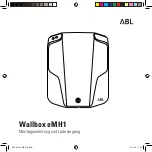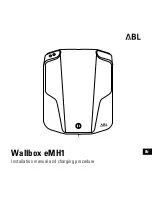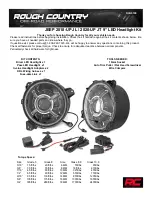
and state laws before installing snow
chains.
If the vehicle becomes stuck in snow, make
sure snow is kept clear of the air extraction
system and from around the vehicle with the
drive system in operation. Otherwise, deadly
carbon monoxide (CO) gases may enter
vehicle interior resulting in unconsciousness
and death.
To assure sufficient fresh air ventilation, open
a window slightly on the side of the vehicle
not facing the wind.
The outside temperature indicator is not
designed to serve as an ice-warning device
and is therefore unsuitable for that purpose.
Indicated temperatures just above the
freezing point do not guarantee that the road
surface is free of ice. The road may still be icy,
especially in wooded areas or on bridges.
On slippery road surfaces, never downshift in
order to obtain braking action. This could
result in drive wheel slip and reduced vehicle
control. Your vehicle’s ABS will not prevent
this type of loss of control.
The most important rule for slippery or icy
roads is to drive sensibly and to avoid abrupt
acceleration, braking and steering
maneuvers. Do not use the cruise control
system under such conditions.
When the vehicle is in danger of skidding, shift
the automatic transmission to neutral
position
N. Try to keep the vehicle under
control by corrective steering action.
i
For information on driving with snow
Road salts and chemicals can adversely
affect braking efficiency. Increased pedal
force may become necessary to produce the
normal brake effect.
Depressing the brake pedal periodically when
traveling at length on salt-strewn roads can
bring road-salt-impaired braking efficiency
back to normal.
If the vehicle is parked after being driven on
salt-treated roads, the braking efficiency
should be tested as soon as possible after
driving is resumed.
Make sure not to endanger any other road
users when carrying out these braking
maneuvers.
Driving instructions
To save fuel you should:
R
Keep tires at the recommended inflation
pressures.
R
Remove unnecessary loads.
R
Remove roof rack when not in use.
R
Allow drive system to warm up under low
load use.
R
Avoid frequent acceleration and
deceleration.
R
Have all maintenance work performed at
the intervals specified in the Maintenance
Booklet and as required by the
Maintenance system. Contact an
authorized F-CELL Service Center.
Fuel consumption is also increased by driving
in cold weather, in stop-and-go traffic, on
short trips and in mountainous areas.
Driving instructions
303
Operation
245_AKB; 1; 73, en-US
d2ureepe,
Version: 2.11.8.1
2009-09-03T15:03:17+02:00 - Seite 303
Z
Summary of Contents for B-Class F-CELL
Page 4: ...245_AKB 1 73 en US d2ureepe Version 2 11 8 1 2009 09 03T15 03 17 02 00 Seite 2 ...
Page 32: ...30 245_AKB 1 73 en US d2ureepe Version 2 11 8 1 2009 09 03T15 03 17 02 00 Seite 30 ...
Page 210: ...208 245_AKB 1 73 en US d2ureepe Version 2 11 8 1 2009 09 03T15 03 17 02 00 Seite 208 ...
Page 316: ...314 245_AKB 1 73 en US d2ureepe Version 2 11 8 1 2009 09 03T15 03 17 02 00 Seite 314 ...
Page 358: ...356 245_AKB 1 73 en US d2ureepe Version 2 11 8 1 2009 09 03T15 03 17 02 00 Seite 356 ...
















































